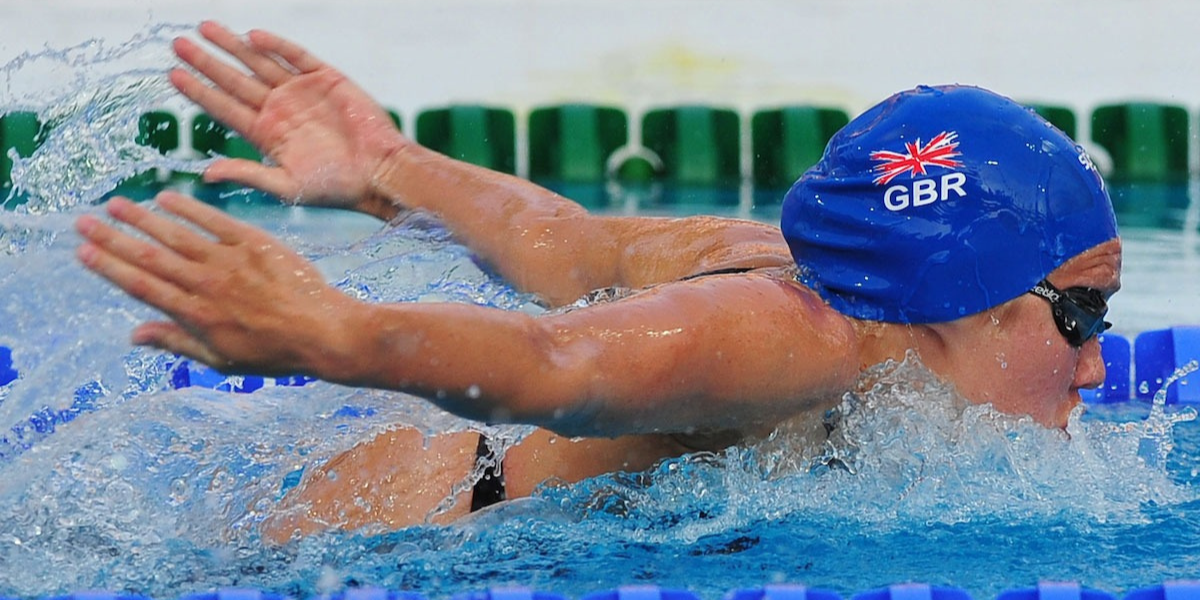The butterfly stroke is renowned for its grace and power, making it a favorite among swimmers seeking a challenging workout and a unique underwater experience. Central to this stroke is butterfly breathing, which plays a pivotal role in maintaining your rhythm and strength. In this comprehensive guide, we will provide you with a detailed overview of butterfly breathing, common mistakes to avoid, effective solutions and techniques, drills and exercises for improvement, and how to overcome the challenges you may face during your butterfly swimming journey.
The Butterfly Stroke: A Quick Overview
Before we dive into butterfly breathing, let’s briefly recap the butterfly stroke itself. The butterfly stroke is known for its simultaneous arm movement and undulating body motion. It demands a high degree of upper body strength, core stability, and coordination, making it one of the most challenging but rewarding swimming strokes.

Common Mistakes in Butterfly Breathing techniques
Butterfly breathing can be particularly challenging due to the rhythmic pattern it requires. Here are some common mistakes swimmers make when it comes to butterfly breathing:
- Holding the Breath: Swimmers often make the mistake of holding their breath during the underwater phase of the stroke, leading to discomfort, anxiety, and reduced stamina.
- Incorrect Timing: Inefficient timing of the breath can disrupt the stroke’s flow and lead to a less powerful kick and pull.
- Overlooking Exhalation: Neglecting to exhale completely underwater can result in increased drag and make breathing more challenging when the head resurfaces.
- Neck Strain: Tilting the head too high or too low when breathing can cause neck strain and negatively impact the overall stroke.
Solutions and Techniques for Effective Butterfly Breathing
Effective butterfly breathing is crucial for maintaining your stamina and performance. Here are some techniques to help you master the art of butterfly breathing:
- Rhythmic Exhalation: Exhale continuously through your nose and mouth while your face is submerged. This practice will make it easier to take a quick breath when your head resurfaces.
- Timing with the Stroke: Coordinate your breathing with your arm movements. Inhale as your arms recover above the water and exhale while they’re beneath the surface.
- Controlled Head Movement: Keep your head movement minimal. Lift it just enough to take a breath and immediately tuck it back in for a streamlined position.
- Breath Frequency: Experiment with your breathing frequency to find what works best for you. Some swimmers prefer to breathe every two strokes, while others opt for every stroke.

Butterfly breathing Techniques
Drills and Exercises for Improving Butterfly Breathing Techniques
To enhance your butterfly breathing skills, incorporate the following drills and exercises into your training routine:
- Breath Control: Practice exhaling continuously as you maintain a streamlined position. This will help you develop a more controlled and rhythmic breathing pattern.
- Single-Arm Drills: Perform butterfly with one arm while the other remains extended forward, focusing on breathing patterns. Alternate arms to work on your breath coordination.
- Dolphin Kick Drills: Isolate your leg kick while practicing breathing techniques. This helps to reduce the complexity of the full stroke and allows you to concentrate on your breath.
- Breath-Focused Sets: Design sets that specifically target your breathing technique. For example, swim 25 meters focusing solely on breathing without worrying about speed or form.
Overcoming Common Challenges
Butterfly breathing can be a challenging aspect of this stroke, but with dedication and consistent practice, you can overcome these challenges:
- Anxiety: Swimmers often experience anxiety when learning butterfly breathing. Start with shorter distances and gradually increase the distance as you become more comfortable.
- Muscle Fatigue: Developing the muscles required for butterfly breathing may take time. Incorporate strength training exercises to improve your lung capacity and endurance.
- Neck Strain: To alleviate neck strain, work on maintaining a neutral head position while breathing. Regularly stretching and strengthening your neck muscles can also help.
- Breath Control: Develop breath control by practicing breath-holding exercises and gradually extending the duration of your breaths.
Conclusion
Butterfly breathing is a fundamental component of the beautiful and challenging butterfly stroke. While it can be intimidating for beginners, with the right techniques, drills, and exercises, you can master it and enjoy a powerful and efficient butterfly stroke.
By understanding common mistakes and how to avoid them, you can overcome the challenges associated with butterfly breathing. Regular practice and patience are key to honing your butterfly breathing skills and unlocking your full potential in the water.
So, embrace the journey of mastering butterfly breathing, and watch as it transforms your butterfly stroke into a graceful and powerful swim, enhancing your overall swimming experience.
Read more: Butterfly Stroke Breathing: How to Improve
AUTHOR
Sang Nguyen
Sang Nguyen is a former national swimmer for Vietnam who has transitioned into coaching. With a passion for fostering a healthy swimming community and connecting like-minded individuals,......Read More
BLOG
Maybe You Are Interested
Good Swim Meet Snacks: What to Eat for Optimal Performance
Good nutrition is crucial for swimmers to maintain energy, recover quickly, and perform at their...
Read More...Optimizing Your Performance: The Best Diet for Swimming Training
Optimizing your performance in swimming is not just about rigorous training; it’s equally crucial to...
Read More...Achieve Peak Performance with This Diet Chart for Swimmers
Whether you’re a novice or an expert swimmer, understanding the right diet is crucial for...
Read More...Eating Like a Champion: Exploring the Diet of Michael Phelps
Michael Phelps, renowned for his Olympic triumphs, has a diet as extraordinary as his swimming...
Read More...Muscle Gain for Swimmers: Tailoring Your Diet for Strength
Swimming is a demanding sport that requires a tailored approach to nutrition to support muscle...
Read More...A Comprehensive Diet Plan To Gain Weight For Swimmers
Swimming is a demanding sport that requires meticulous attention to nutritional needs to optimize performance,...
Read More...